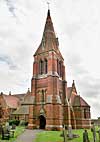For this church:    |
|
 Gates to the Gates to thechurchyard |
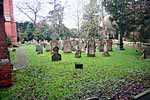 View of the north side View of the north sideof the churchyard |
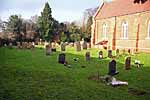 View of the south side View of the south sideof the churchyard |
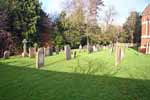 View of the west side View of the west sideof the churchyard |
Gravestones exist in all areas of the churchyard and date back to the first half of the 18th century. The oldest are generally made from either sandstone or slate, the latter tending to be the better preserved. There is no particular area in which graves from various centuries have been placed, although the most recent graves are in the south-east area of the churchyard, and there is an area for cremated remains along the north side of the church.
The two earliest readable gravestones are dated 1725 and 1740. Both are made from sandstone, and are in remarkably good condition. The earliest slate gravestones date from the mid 18th century, many of which are decorated with intricate carvings. Some gravestones from the 19th and 20th centuries are also impressively carved.
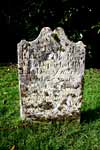 Thomas Keep Thomas Keep(1725) |
 John Hoole John Hoole(1756) |
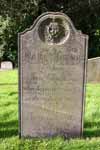 James Clark James ClarkJunior (1791) |
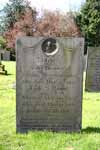 John and Ann John and Ann Waddington (1813) |
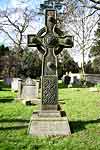 Jane Gilstrap (1904) Jane Gilstrap (1904) |
There are no Commonwealth War Graves Commission graves, but there is a memorial added at the bottom of the gravestone for John Edward and Hannah Eliza Walker, to their son John Edward Walker, Lance Sergeant in the 1st Bn. Lincolnshire Regiment, who was killed in action on 4th Oct 1917 and is commemorated on the Tyne Cot Memorial in Belgium.
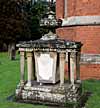 The Thompson The Thompsonfamily grave |
The one tomb of note, which is Grade II listed (and in the Listing Description section), is the early 19th century table top tomb for the Thompson family, situated next to the south-west corner of the church.
Burials are recorded in the following surviving registers, all except the last being kept at the Nottinghamshire Archives:
 General register, 1697 – 1808
General register, 1697 – 1808
 General register, 1808 – 1823
General register, 1808 – 1823
 Burial register, 1813 – 1992
Burial register, 1813 – 1992
 Burial register, 1993 onwards
Burial register, 1993 onwards


